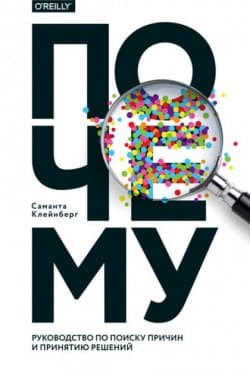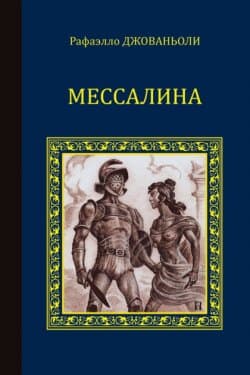Почему - Саманта Клейнберг (2017)
-
Год:2017
-
Название:Почему
-
Автор:
-
Жанр:
-
Язык:Русский
-
Страниц:161
-
Рейтинг:
-
Ваша оценка:
Почему - Саманта Клейнберг читать онлайн бесплатно полную версию книги
Beasley, N. A. (1968). The extent of individual differences in the perception of causality. Canadian Journal of Psychology, 22(5): 399–407.
Bechlivanidis, C. and Lagnado, D. A. (2013). Does the “Why” Tell Us the “When”? Psychological Science, 24(8): 1563–1572.
Beecher, H. K. (1955). The Powerful Placebo. Journal of the American Medical Association, 159(17): 1602–1606.
Begley, C. G. and Ellis, L. M. (2012). Drug development: Raise standards for preclinical cancer research. Nature, 483(7391): 531–533.
Bennett, C. M., Baird, A. A., Miller, M. B., and Wolford, G. L. (2011). Neural Correlates of Interspecies Perspective Taking in the Post-Mortem Atlantic Salmon: An Argument For Proper Multiple Comparisons Correction. Journal of Serendipitous and Unexpected Results, 1: 1–5.
Bhatt, A. (2010). Evolution of Clinical Research: A History Before and Beyond James Lind. Perspectives in Clinical Research, 1(1): 6–10.
Bickel, P. J., Hammel, E. A., and O’Connell, J. W. (1975). Sex Bias in Graduate Admissions: Data from Berkeley. Science, 187(4175): 398–404.
Blackwell, B., Bloomfield, S. S., and Buncher, C. R. (1972). Demonstration to medical students of placebo responses and non-drug factors. The Lancet, 299(7763): 1279–1282.
Blatchford, P. and Mortimore, P. (1994). The Issue of Class Size for Young Children in Schools: What can we learn from research? Oxford Review of Education, 20(4): 411–428.
Bohrnstedt, G. W. and Stecher, B. M. (eds.) (2002). What We Have Learned about Class Size Reduction in California. American Institutes for Research, Palo Alto, CA.
Bollinger, B., Leslie, P., and Sorensen, A. (2011). Calorie Posting in Chain Restaurants. American Economic Journal: Economic Policy, 3(1): 91–128.
Bond, R. M., Fariss, C. J., Jones, J. J., Kramer, A. D., Marlow, C., Settle, J. E., and Fowler, J. H. (2012). A 61-million-person experiment in social influence and political mobilization. Nature, 489(7415): 295–298.
Born, M. and Einstein, A. (1971). The Born Einstein Letters: Correspondence between Albert Einstein and Max and Hedwig Born from 1916 to 1955 with commentaries by Max Born. Macmillan Press, Basingstroke, UK. Translated by Irene Born.
Boyd, C. M., Darer, J., Boult, C., Fried, L. P., Boult, L., and Wu, A. W. (2005). Clinical Practice Guidelines and Quality of Care for Older Patients With Multiple Comorbid Diseases: Implications for Pay for Performance. JAMA, 294(6): 716–724.
Brandt, M. J., IJzerman, H., Dijksterhuis, A., Farach, F. J., Geller, J., Giner-Sorolla, R., Grange, J. A., Perugini, M., Spies, J. R., and Van’t Veer, A. (2014). The Replication Recipe: What makes for a convincing replication? Journal of Experimental Social Psychology, 50: 217–224.
Broadie, S. (2009). The Ancient Greeks. In H. Beebee, C. Hitchcock, and P. Menzies (eds.), The Oxford Handbook of Causation, pp. 21–39. Oxford University Press, Oxford; New York.
Buchanan, M. (2007). Statistics: Conviction by numbers. Nature, 445: 254–255.
Buck, D. and Buehler, R. (2012). Bike Lanes and Other Determinants of Capital Bikeshare Trips. In 91st Transportation Research Board Annual Meeting.
Buehner, M. J. and May, J. (2003). Rethinking temporal contiguity and the judgement of causality: Effects of prior knowledge, experience, and reinforcement procedure. The Quarterly Journal of Experimental Psychology, Section A, 56(5): 865–890.
Buehner, M. J. and May, J. (2004). Abolishing the effect of reinforcement delay on human causal learning. The Quarterly Journal of Experimental Psychology, Section B, 57(2): 179–191.
Buehner, M. J. and McGregor, S. (2006). Temporal delays can facilitate causal attribution: Towards a general timeframe bias in causal induction. Thinking & Reasoning, 12(4): 353–378.
Campbell, M. K., Elbourne, D. R., and Altman, D. G. (2004). CONSORT statement: Extension to cluster randomised trials. BMJ, 328: 702–708.

 Без невроза
Без невроза  Осколки времени
Осколки времени  Свет между нами
Свет между нами  Смотреть и видеть
Смотреть и видеть  Почему. Руководство по поиску причин и принятию решений
Почему. Руководство по поиску причин и принятию решений  Мужчина и женщина
Мужчина и женщина  The One. Единственный
The One. Единственный  Щипач
Щипач  Куплю тебя. Дорого
Куплю тебя. Дорого 



















